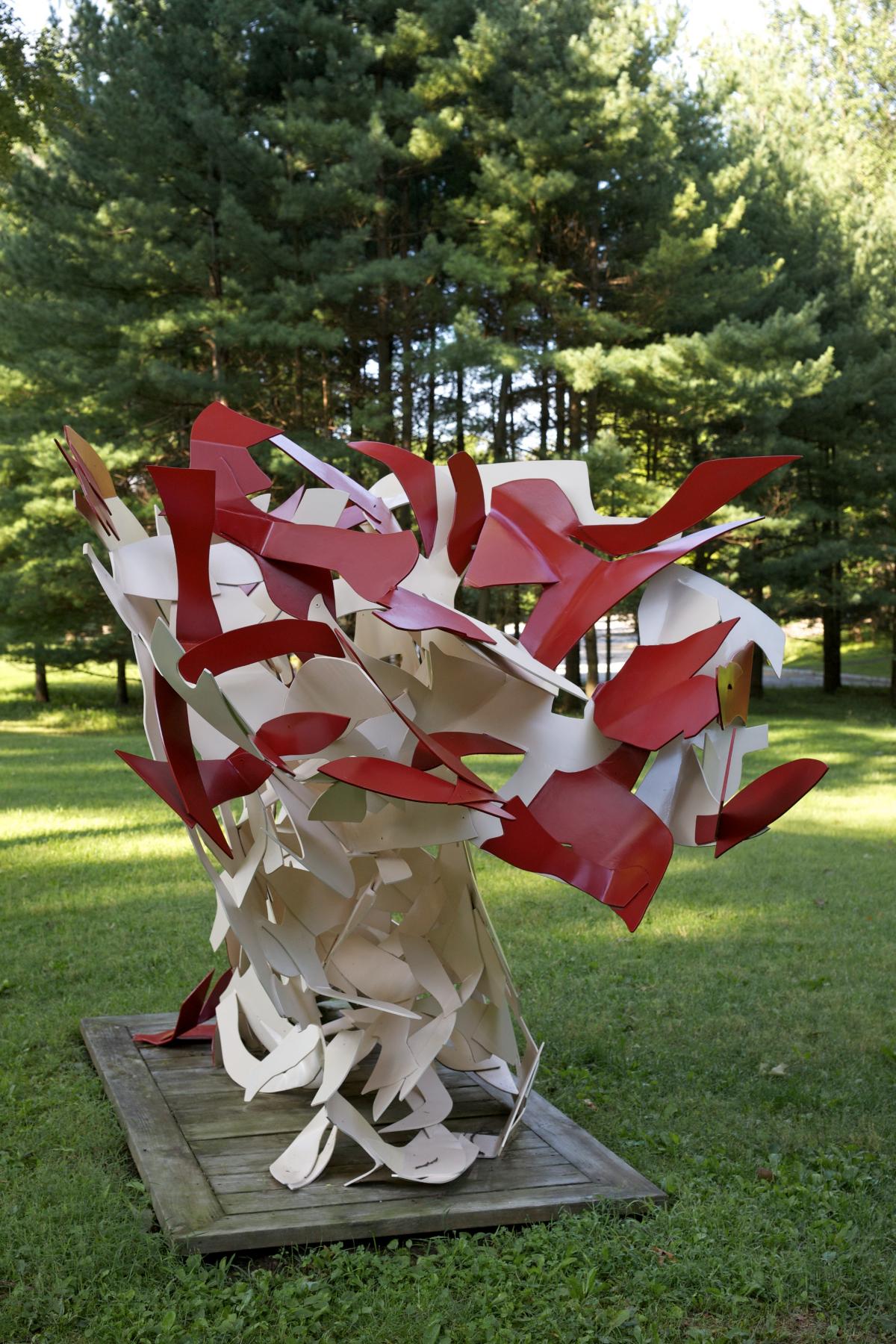Off view

American, 1912–1999
One, 1975–77
Painted aluminum
6 ft. 6 in. x 8 ft. 8 in. x 72 in. (198.1 x 264.2 x 182.9 cm)
Purchased with the aid of funds from the National Endowment for the Arts and gift of the Ralph E. Ogden Foundation
© 2021 Estate of George Sugarman / Licensed by VAGA at Artists Rights Society (ARS), NY
Photo by Jerry L. Thompson
Undulating, curling, and twisting, the paper-thin forms of One enact a gravity-defying dance in aluminum. The elaborate shapes, both delicate and dense, recall the Baroque art that impressed George Sugarman during his first travels in Europe. Later, reflecting on the period during which he made One, Sugarman noted, “All through the ’60s and ’70s I had no label. I wasn’t Pop. I wasn’t Minimal. And ‘Maximal’ was a word that wasn’t used. Yet I was a Maximalist. I wanted to put everything in my work, even the kitchen sink.”
Inspired in part by the flat, unmodulated color used by Henri Matisse and Stuart Davis, Sugarman often painted his cut-out forms in bright colors. In One, a dark red infiltrates the lace-like white. “In my sculpture, the color is as important as form and space. It is used to articulate the sculpture as much as form articulates the sculpture in space.” Like many of his contemporaries, Sugarman also appreciated jazz, which taught him about rhythm, pacing, and form.
Inspired in part by the flat, unmodulated color used by Henri Matisse and Stuart Davis, Sugarman often painted his cut-out forms in bright colors. In One, a dark red infiltrates the lace-like white. “In my sculpture, the color is as important as form and space. It is used to articulate the sculpture as much as form articulates the sculpture in space.” Like many of his contemporaries, Sugarman also appreciated jazz, which taught him about rhythm, pacing, and form.
